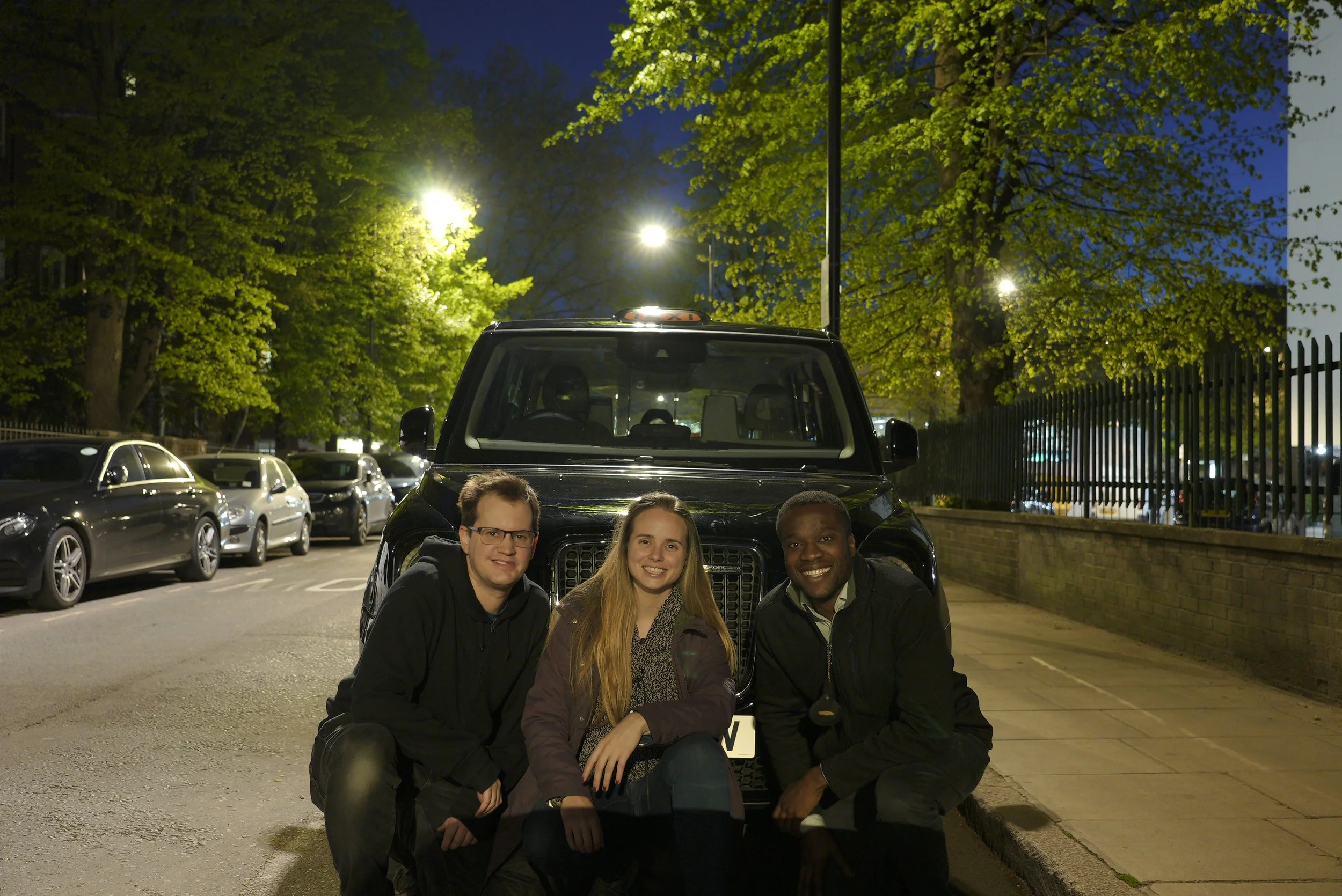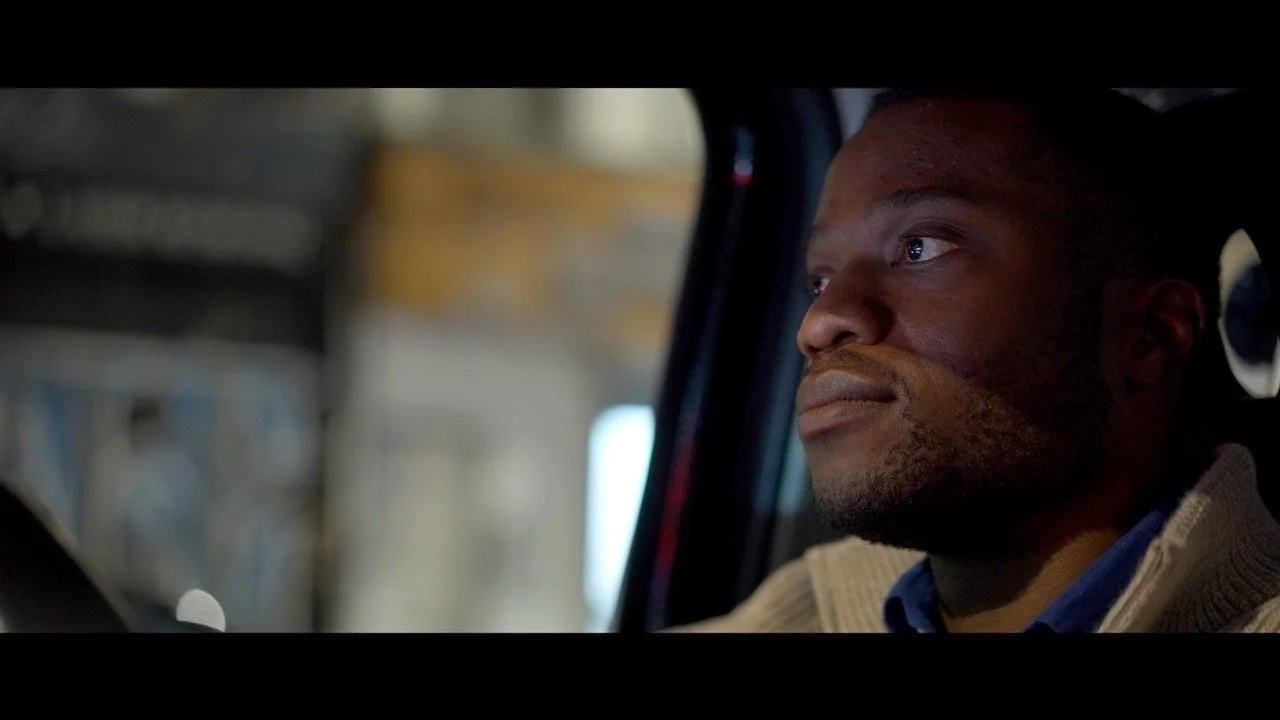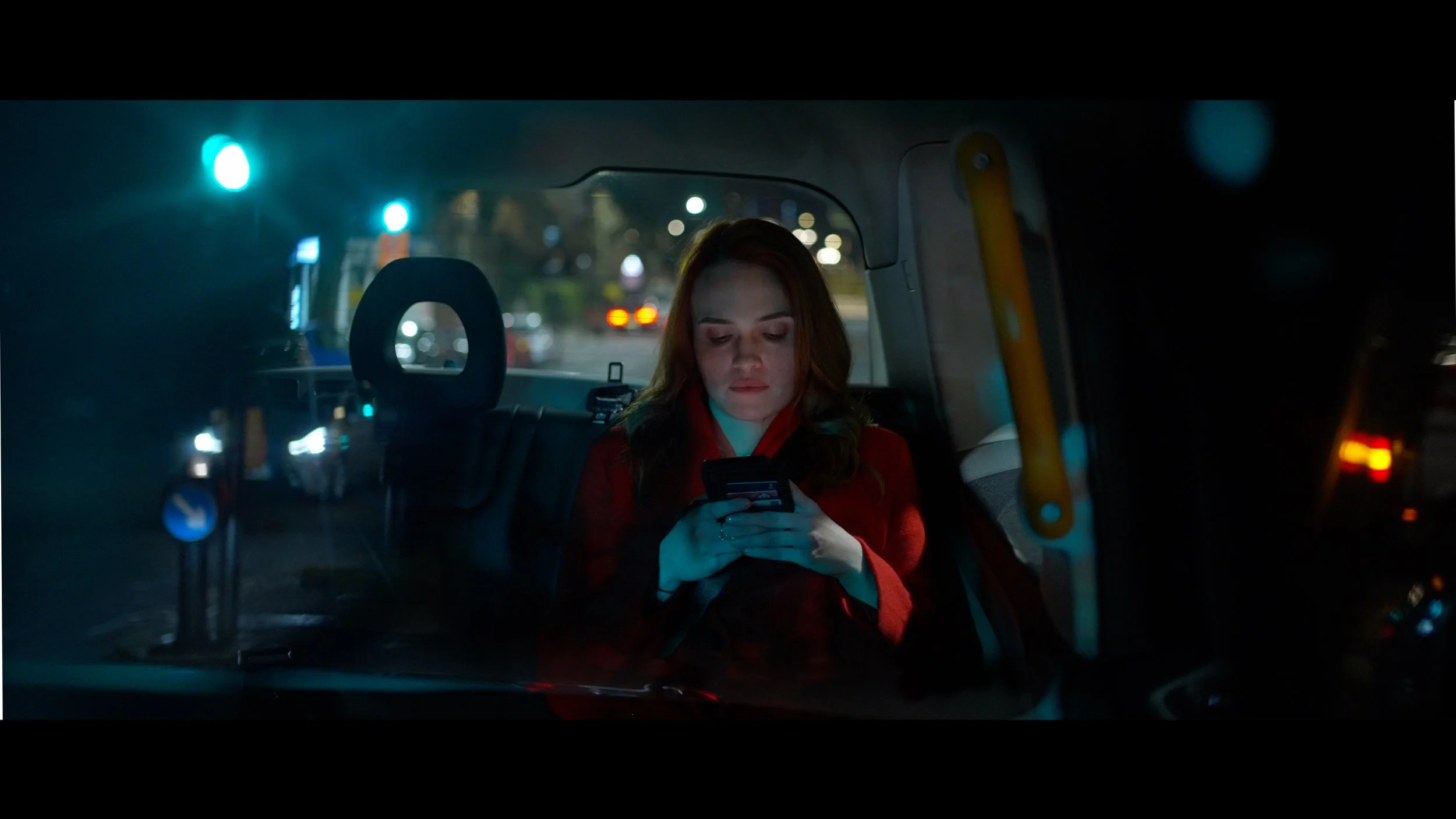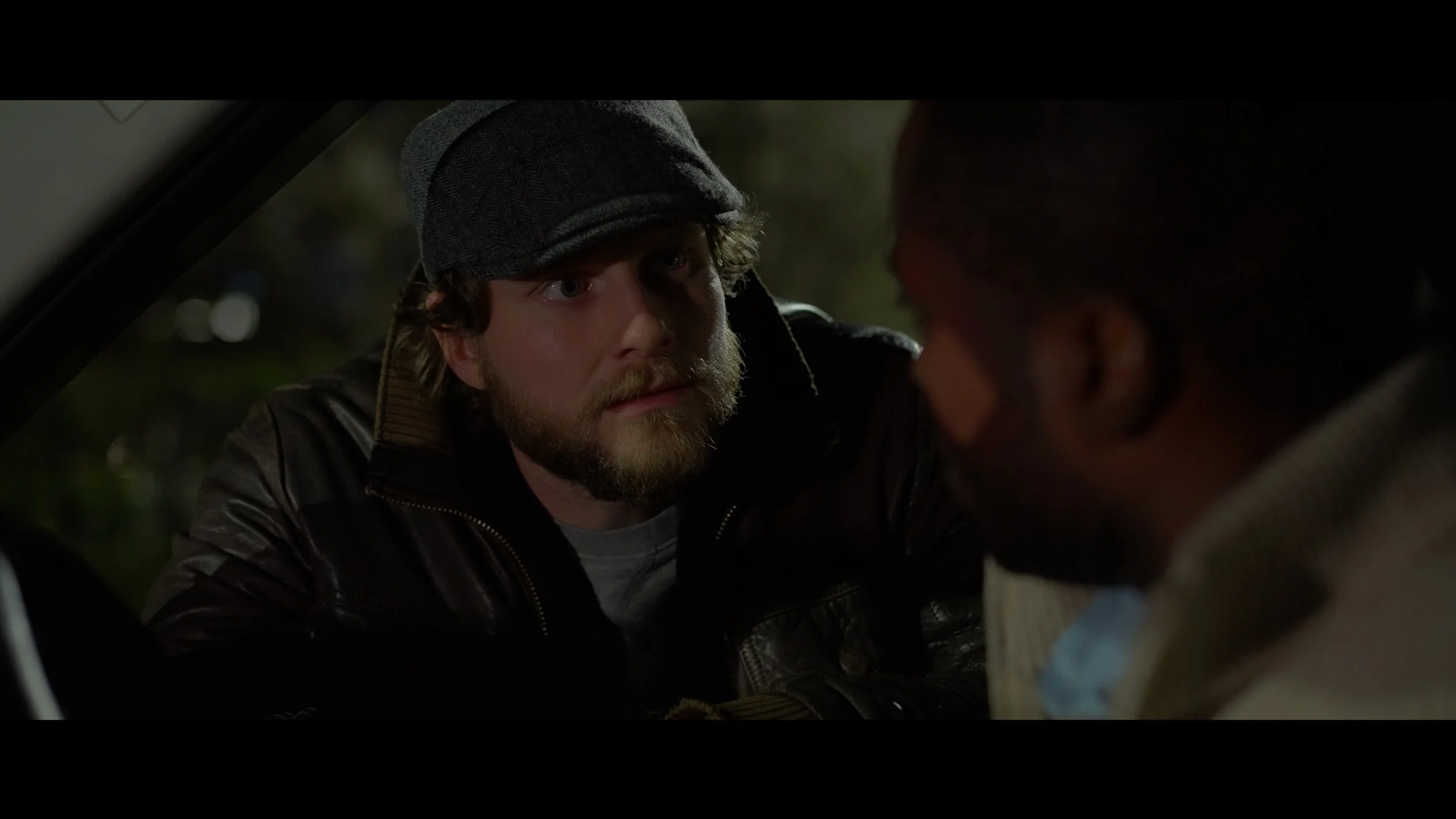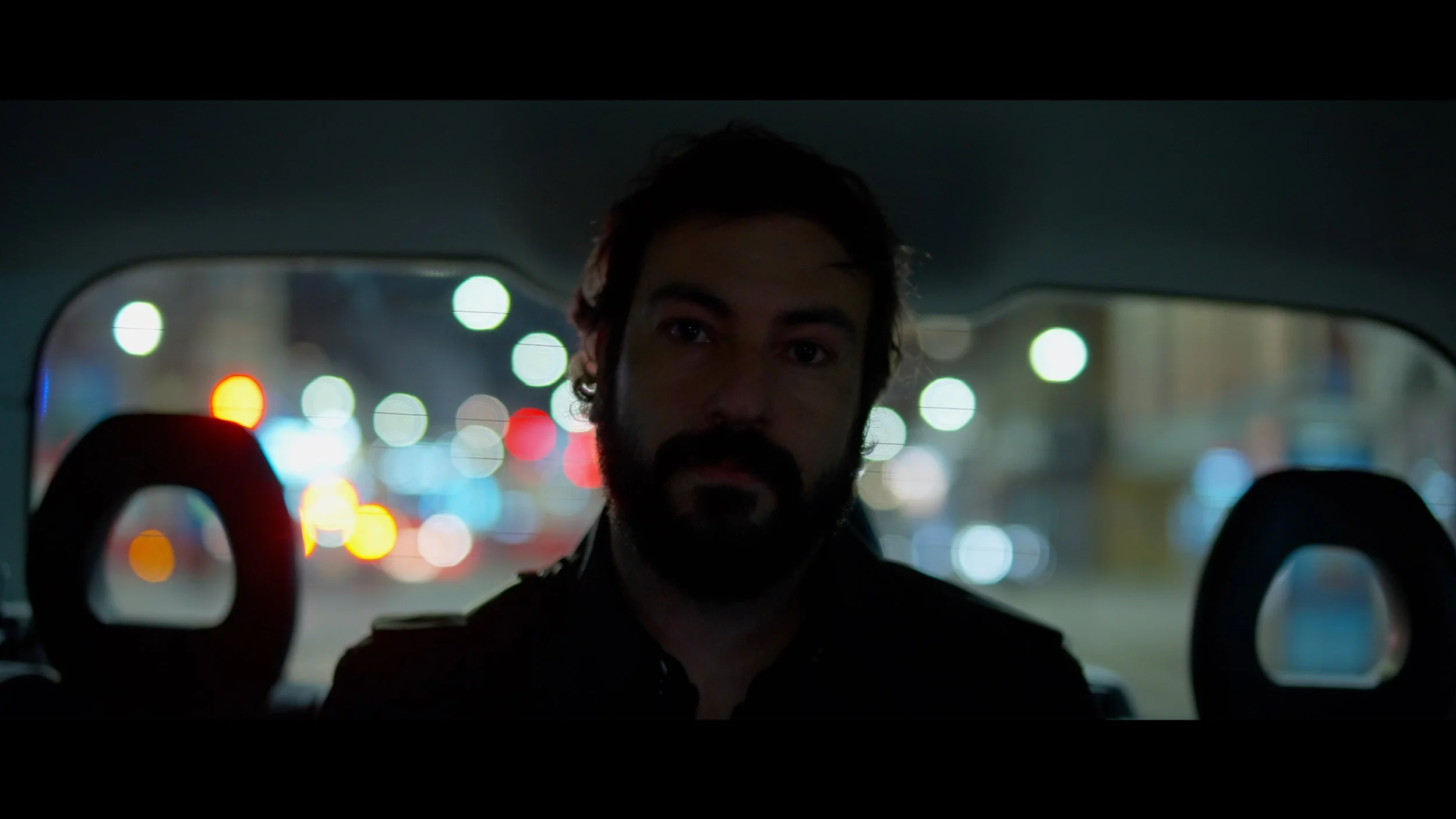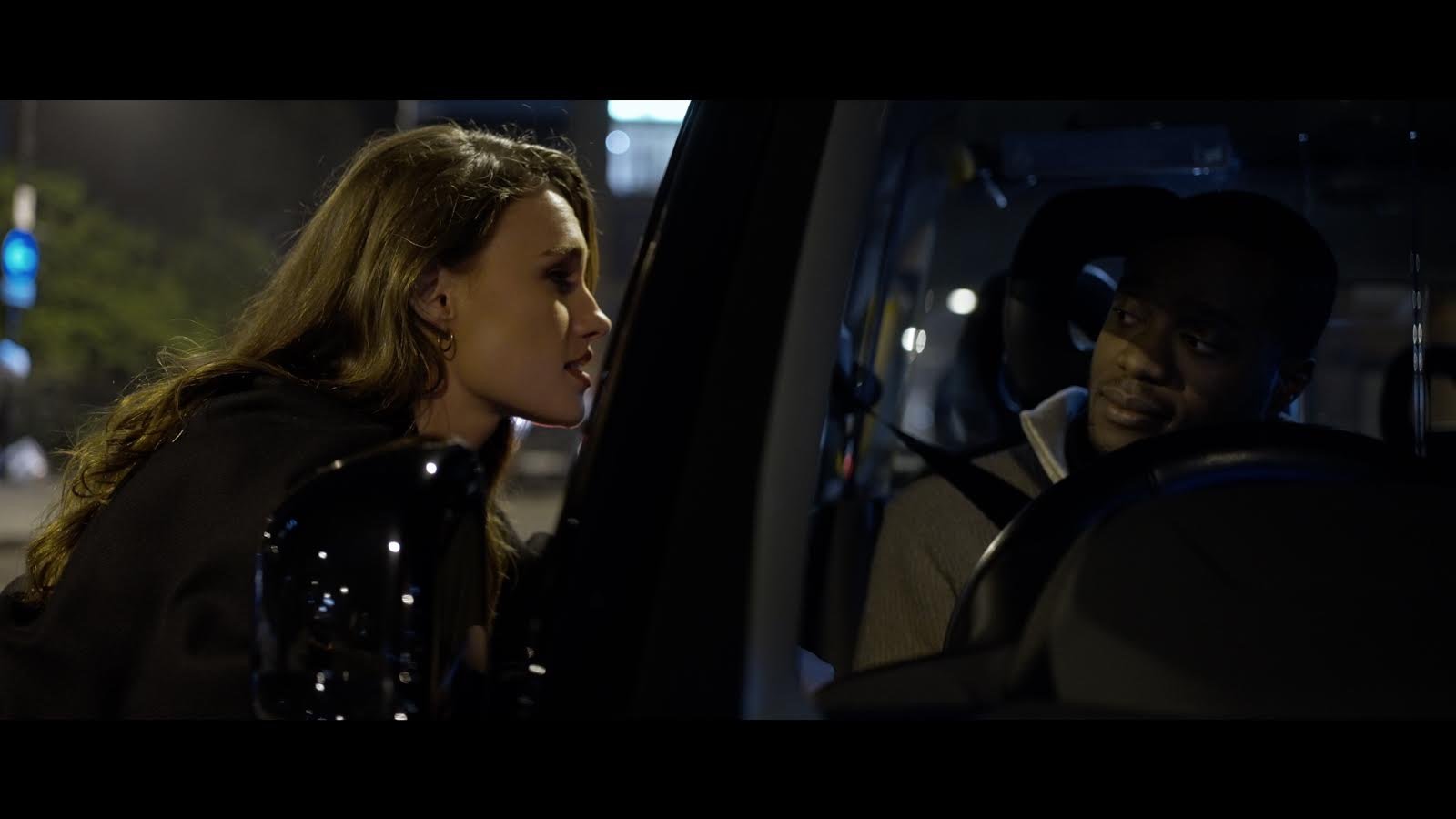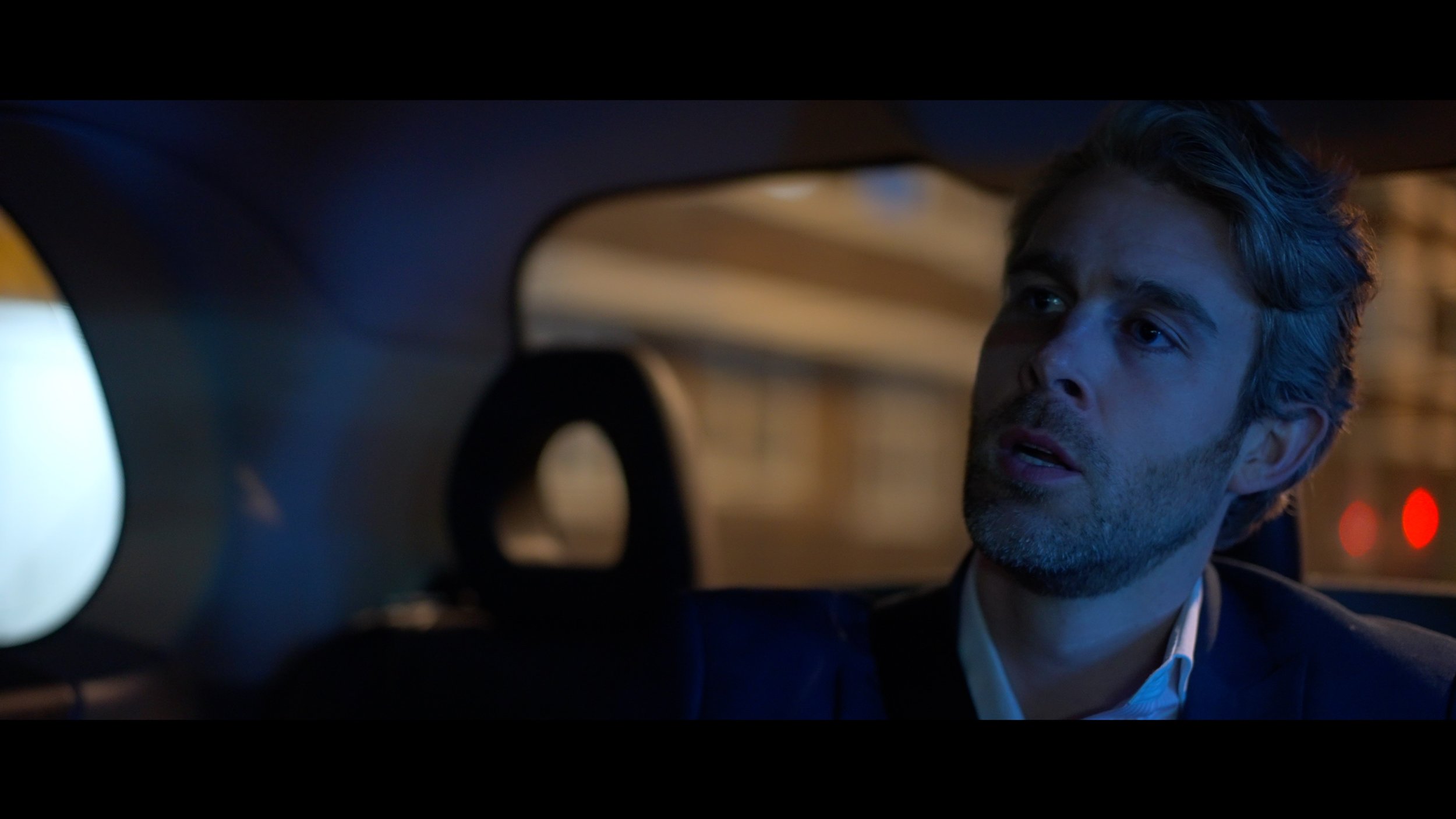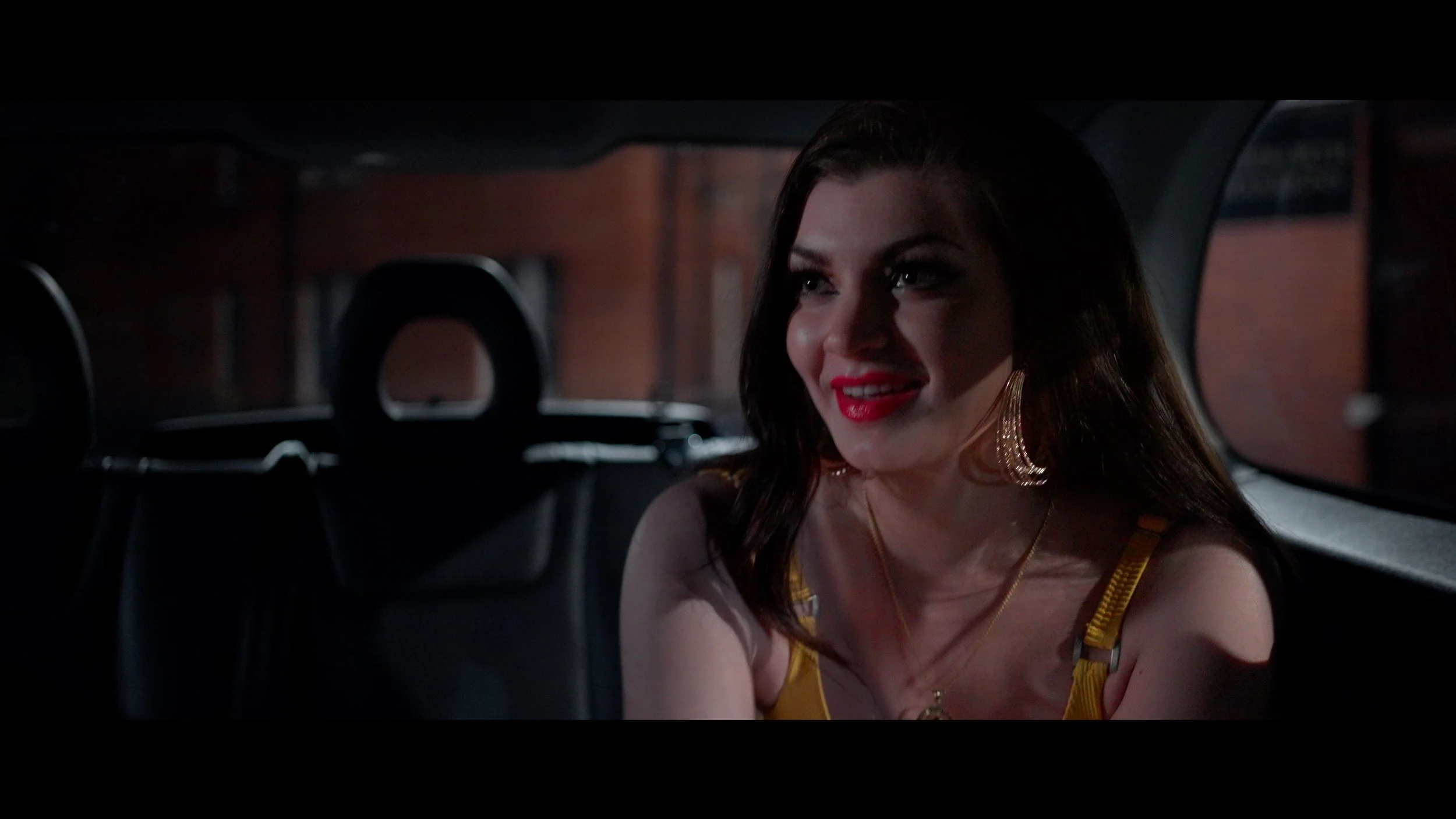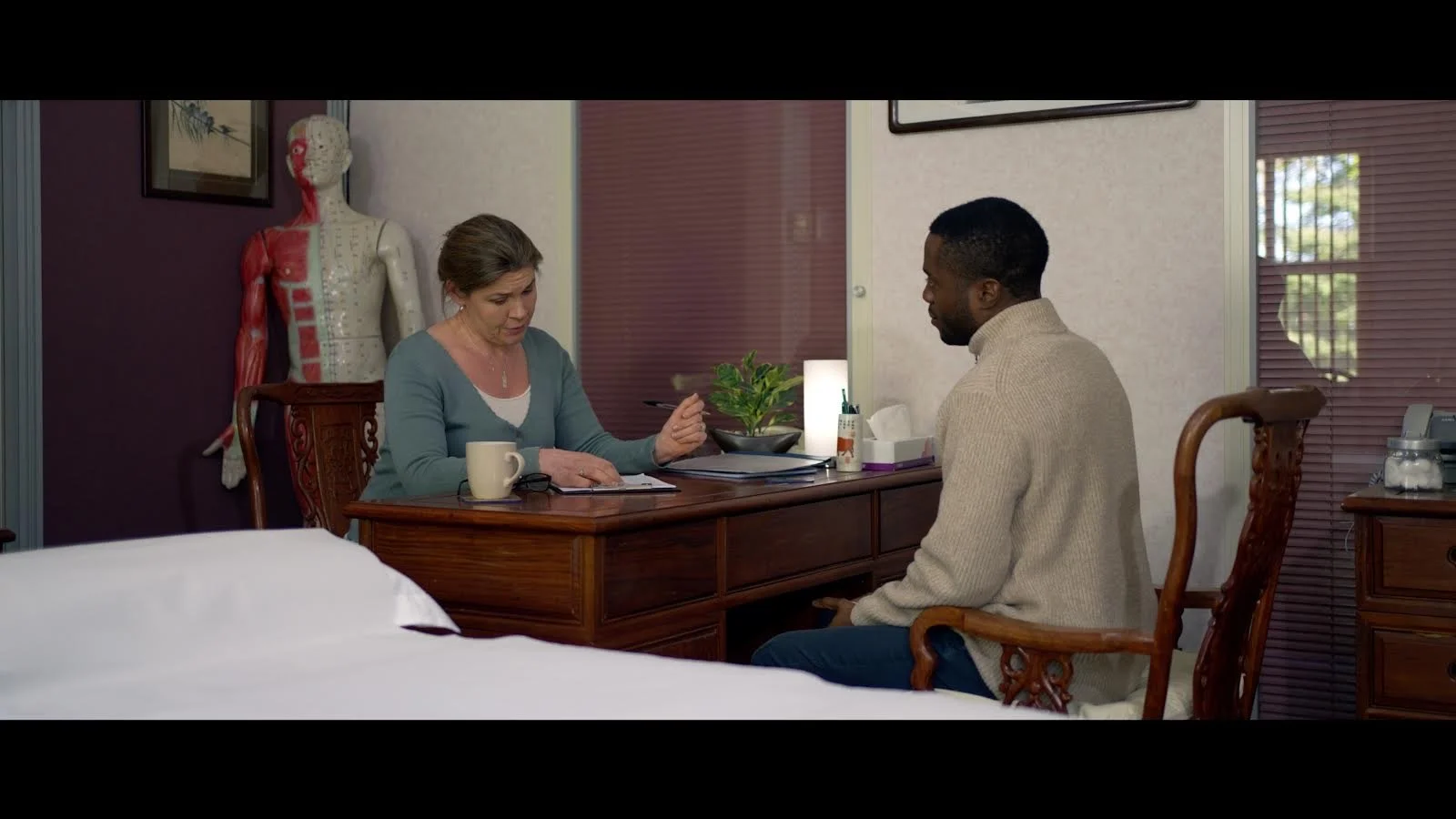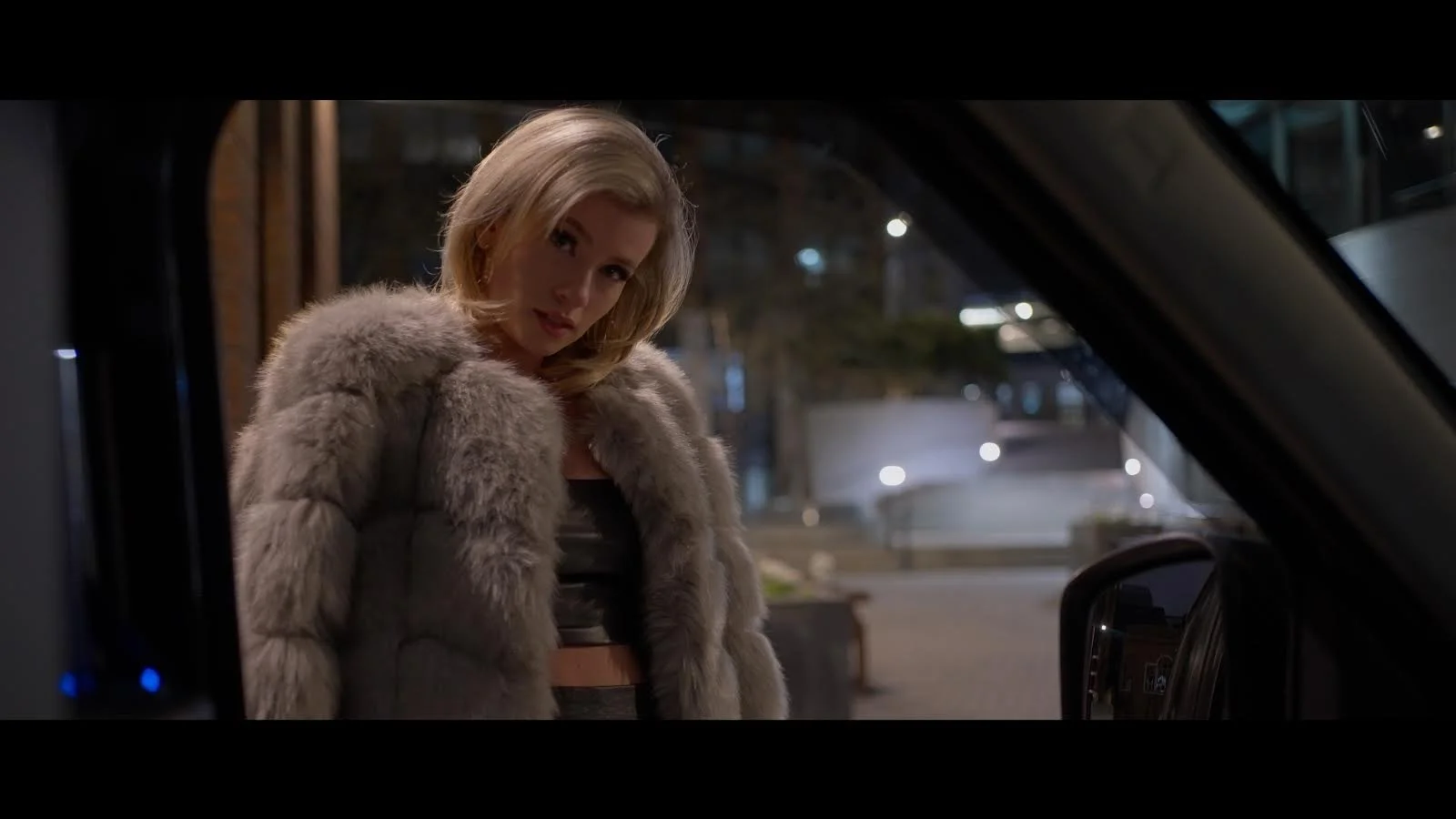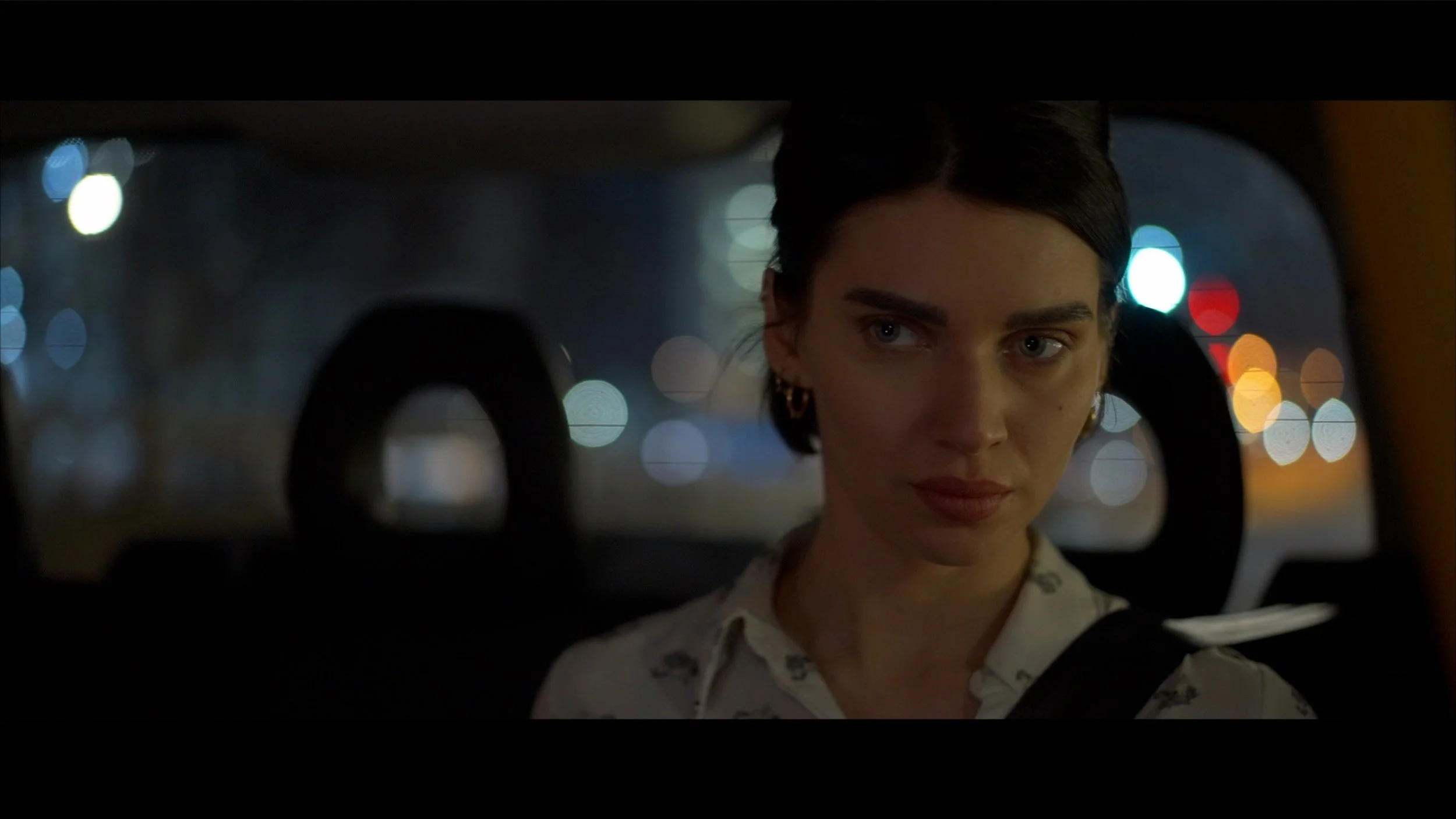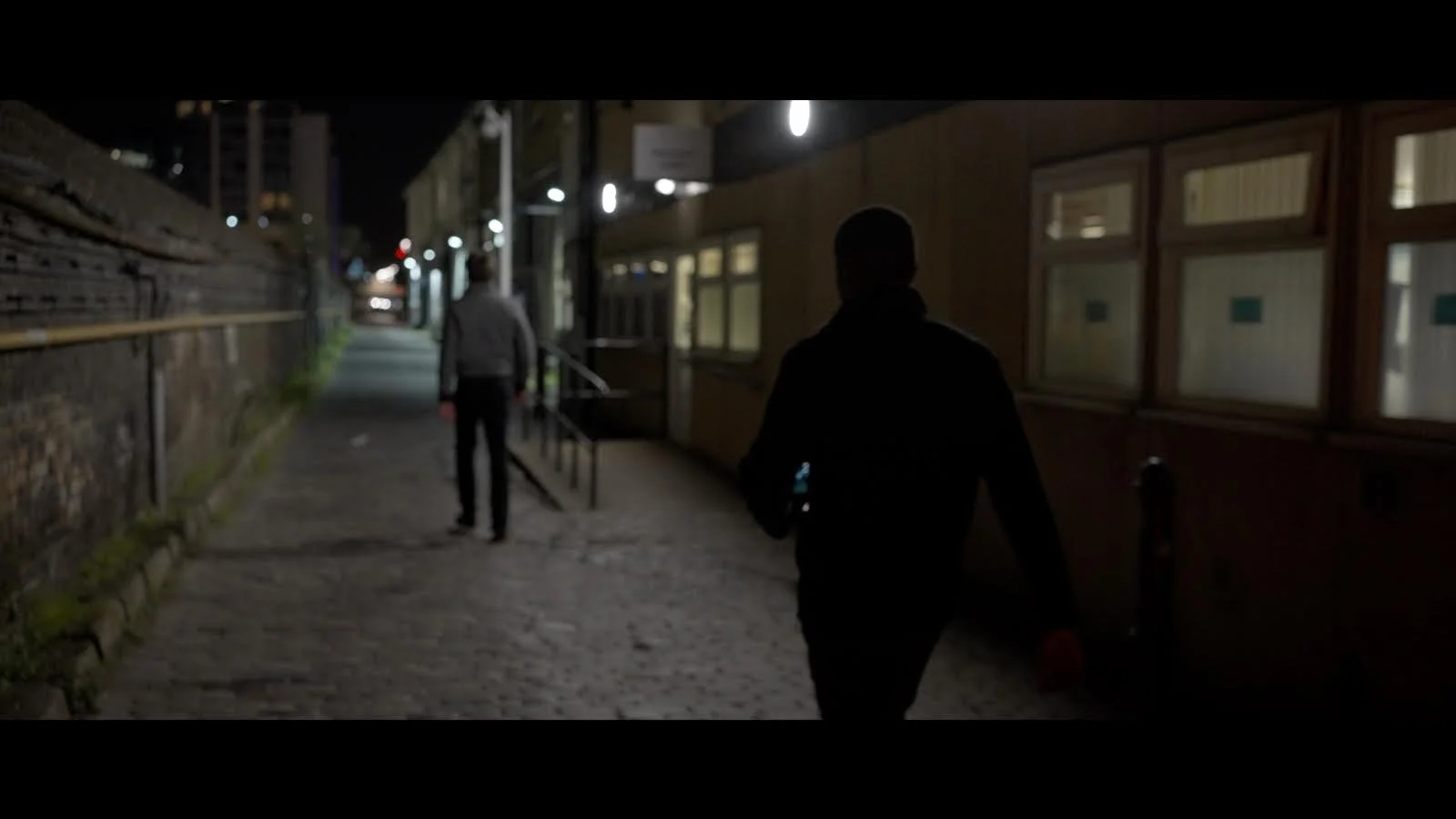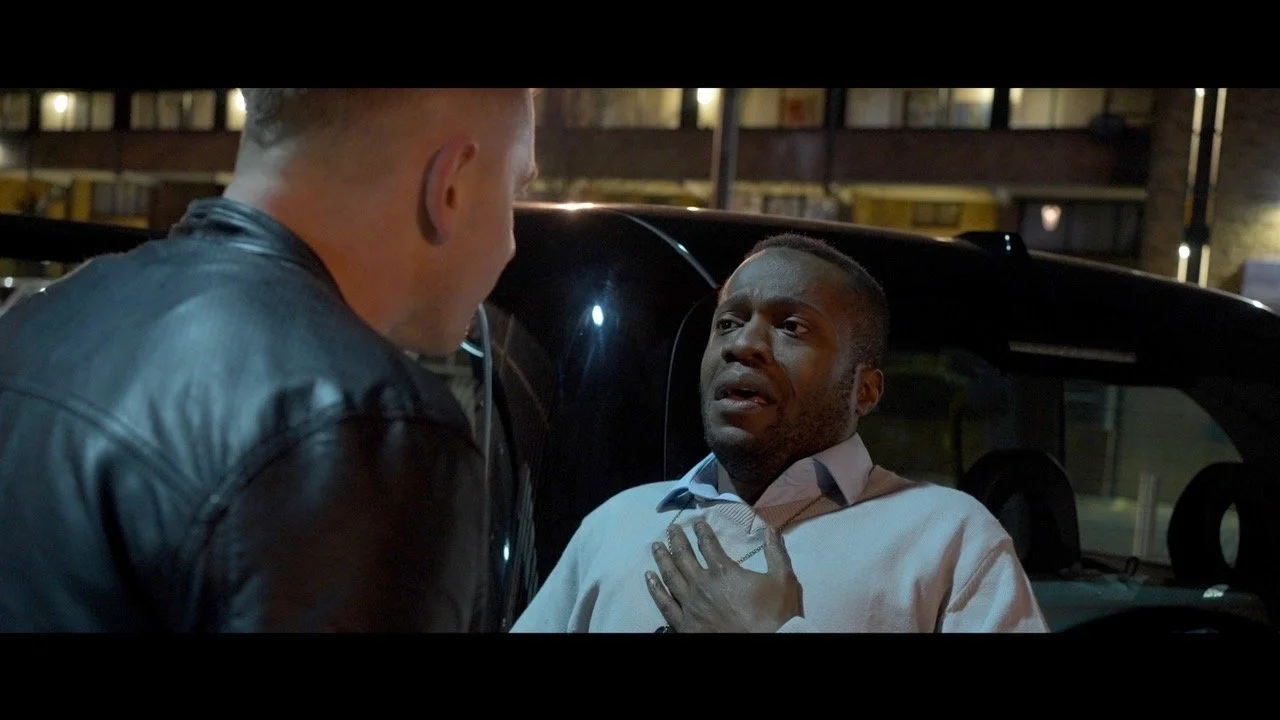A rough Behind the Scenes video of the making of BLACK CAB.
A more polished video coming soon…
THE MAKING OF BLACK CAB
BLACK CAB is a pandemic film that has nothing to do with the pandemic. When we wrote the first draft in 2020, we knew immediately that the story required us to drive a cab around London…for real. Similarly, we needed London to feel like a character itself, which would require us to shoot on the streets. The only way we could achieve this type of guerrilla filmmaking was to take advantage of the lockdowns. So we did.
The story and characters are heavily influenced by the pandemic. Isolation and loneliness are running themes, underscored by the physical dividers of the cab’s plexiglass divider that keep the characters separated throughout most of the film.
The film was shot over 21 days (mostly nights). Budget was, as always, a factor. We also speculated that after April 2021, lockdowns may never return in a significant way. More important than budget and lockdowns, though, was the unchangeable reality of seasons. We had a hard deadline of completing the film by the end of April simply because by May there wouldn’t be enough hours in the night. We began shooting on the 7th of April and by the end of production, the nights had shrunk by X hours.

THE SCRIPT
Samantha wrote the first draft of BLACK CAB during the first global lockdown, inspired by the numerous late-night cab rides she had taken in Central London in 2019 and a video game Bertie began playing that featured a night shift cab driver. For several months, we iterated and rewrote multiple drafts. Trusted friends were recruited to read and give notes at various points, and a script editor was hired to assist with the near-final polish. In the end, over 12 full drafts were written.
Throughout the writing process, we did a lot of research into London taxis, cabbie lifestyle, and lurked on driver forums. A huge source of knowledge came from a YouTube channel called Tom the Taxi Driver that chronicled the daily life of a London taxi driver. Bertie reached out to the creator of the channel, Tom Hutley, who became the first official crew member hired on the film.

THE CAB
Getting a cab proved trickier than it first appeared. We knew that we didn’t want to use a diesel cab as the shake and noise would make sound near impossible to record cleanly (and the fumes would be awful all night). Electric cabs, though, weren’t available for rent. They were too new. In February 2021, Bertie saw an electric taxi for sale on eBay and we immediately made the journey up to Coventry to check it out. Indeed, it was a perfectly maintained 2019 electric cab that a driver was trying to shift at cost. We made a decision then and there and came back to London the proud owners of an electric black cab.
If we thought getting our hands on an electric cab would be the hardest part, we were quickly proven wrong. Insuring the vehicle proved near impossible. We called dozens of insurers, but were turned down by everyone because no one had privately owned this vehicle in the UK at the time and we, obviously, weren’t qualified cab drivers. Eventually, it was our broker for our film production insurance who saved us and got the vehicle insured.
The stress was worth it, though, as owning the electric cab was invaluable. In the run-up to shooting, were able to use the cab whenever we wanted for numerous camera tests, driving route tests, and we were able to lend it out to Ladi so he could rehearse and get comfortable behind the wheel whenever he wanted. By the time we began shooting, we were all extremely comfortable with the vehicle.
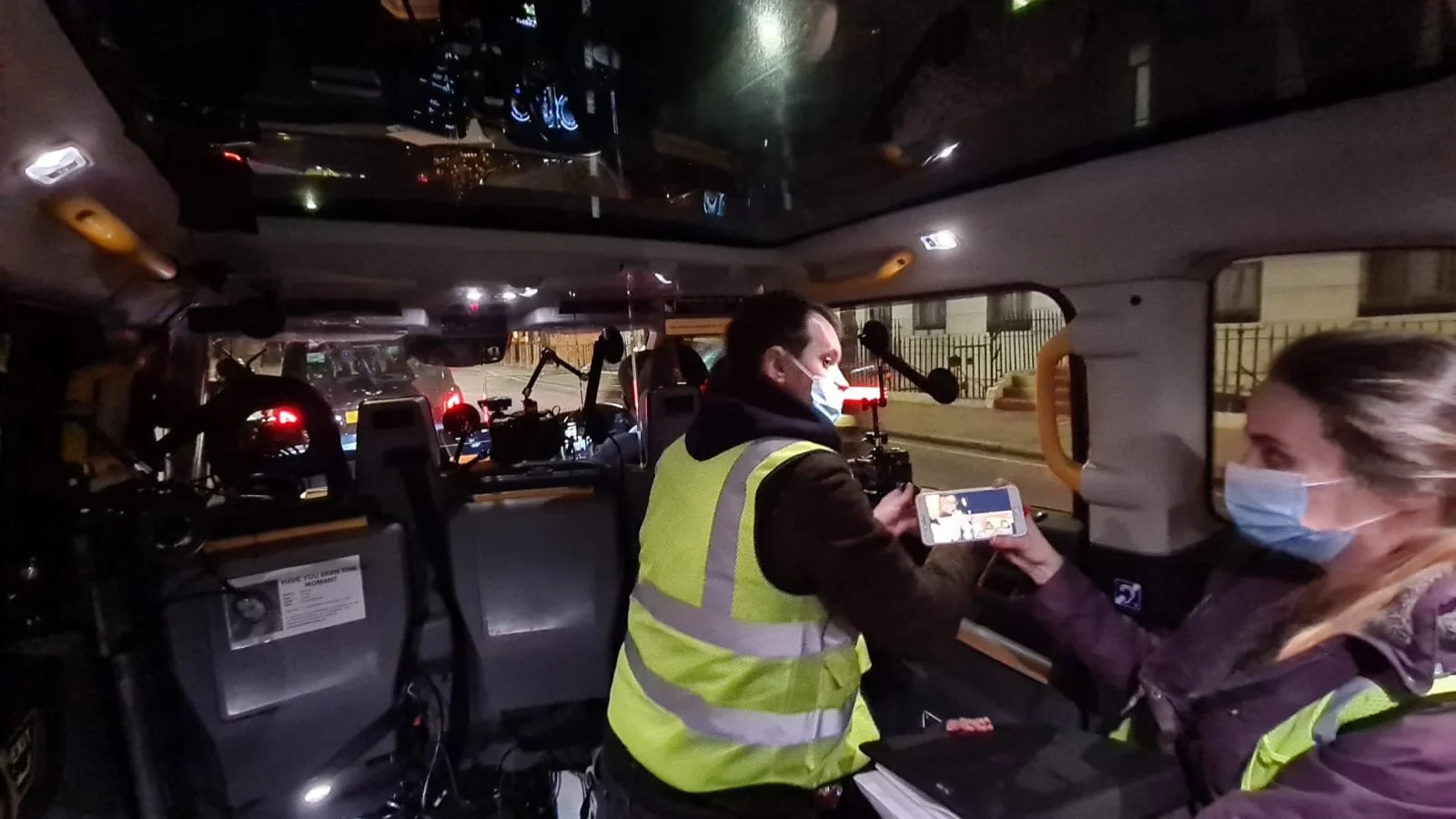
FILMING IN THE CAB
We knew from the start that we needed to film the driving elements for real, and we believed shooting multi-cam would also be essential. Of course, those requirements came with a lot of hurdles. First, was budget. We couldn’t go the ‘normal’ Hollywood way of using a trailer (what movies like Locke and shows like Carpool Karaoke did/do). We also knew that we didn’t have the funds to do a police escort or shut down London roads. Shooting with Russian Arms/U-Cranes was also out of the question. So how do we do it?
Step one was to find out what we could legally and safely do while driving. Thankfully, the Met has a handy guide on exactly this: filming while driving. We used this guide to confirm that the cameras we were going to shoot with, the Sony a7s iii, fell within the safe and legal size requirement. Bertie led the research into how to securely mount the cameras in and around the cab, and came up with an affordable solution of magnets, suction cups, and magic arms for the majority of setups.
We spent several nights doing camera tests within the cab, learning where we could mount cameras and which lenses could be used simultaneously within our various multi-cam setups. In the end, we largely shot with 3 cameras rolling simultaneously, but occasionally used up to 4 at the same time.
Then there was the big hurdle: how do we see anything? Obviously, no one could be in the cab besides our actors. We would be riding ahead of the cab in a different black cab, at least 20 meters ahead to avoid the spill of our brake lights on Ladi’s face. We eventually figured out a way to wirelessly transmit four camera feeds and audio to a split screen display and to one of our phones to monitor.
With cameras largely sorted, we had big decisions to make on lighting. We chose the Sony a7s iii in part because of its performance in low-light, which for a film shooting almost entirely at night was important. The cab itself also had a lot of windows and an enormous sunroof panel. This meant a lot of the city light came through. The problem was that the amount and type of light in London varies street by street. Still, we decided that the story of Black Cab would be better served by more naturalistic lighting and so we decided to use only occasional and minimal light in the driving scenes.
Bertie also discovered the solution to car-to-cab shooting: the Rigwheels Cloud Mount. It was time consuming to set up and takedown, but allowed us to safely and legally film exterior driving shots. Several of the shots in the final film were actually taken from our multiple test days were Ladi would follow us in the cab throughout London while either Bertie or Samantha drove and the other operated the roof-mounted gimbal and camera with an Xbox controller.

CASTING
We began casting looking for our Eddie Carter. Uniquely, the lead role required an actor who could not only carry a film for 90+ minutes, but could do so while driving a black cab. Because of the responsibility the latter part entailed, we decided to approach actors who we already knew and trusted. When Ladi Emeruwa video called with us to read, we knew almost immediately that he was the man for the role. From the moment we offered him the part of Eddie, Ladi put everything into the project and made our long nights on set easier with his poise, preparedness and professionalism. We believe he delivered a fantastic performance, especially considering a third of the movie he is literally driving a large vehicle around London streets!
With our cab driver on board, we began searching for the rest of our cast. We posted public casting notices and were inundated with responses for every role. After weeks of filtering through CVs, showreels, and then self-tapes, we had found most of our amazing cast.
For the cab passengers that we required in the montages, we recruited friends, family, and investors for guest appearances. Kindly, Bertie’s longtime friends Beth, Rosie, and Olivia agreed to help even further by performing a short script and being the very first scene that we shot - giving us the gift of patience as we found our legs on that first night.
Ladi Emeruwa as Eddie Carter
Charlotte Price as Rachel
Eddie Eyre as Trevor
Nathan Turner as Det. Donovan
Miki Davis as Karli
Amerjit Deu as Adam Blomfield
Tom Gordon as Mark Hopkins
Esme Pellegrini as Amira
Laura Fitzpatrick as Dr. Fairchild
Isabella Storm as Felicity
Scarlett Mellish Wilson
Michael Gilhooly as James Dormer
Jamie B. Chambers as Liam
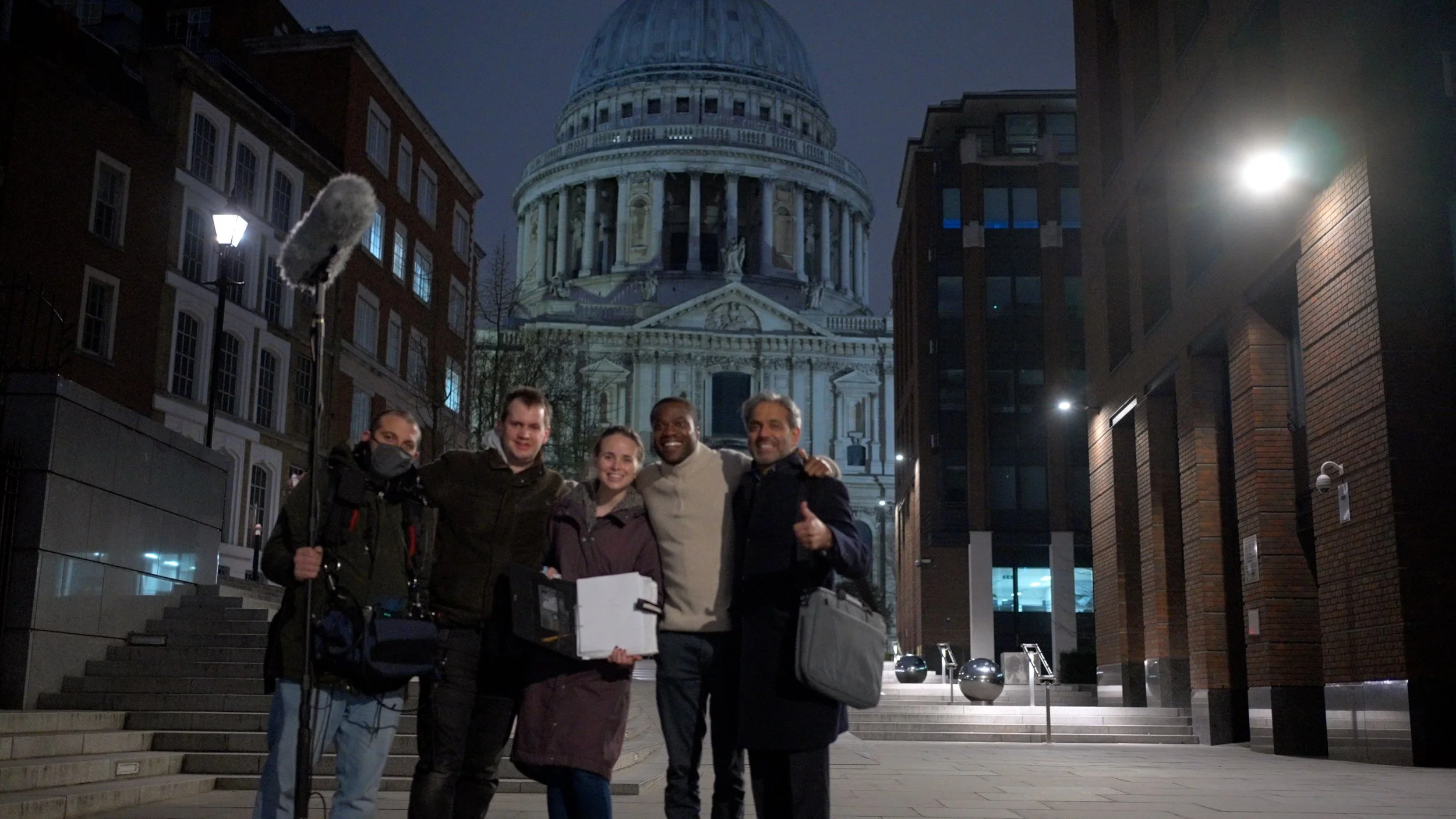
FILMING ON THE STREETS
With London locked down and eerily resembling the opening to 28 Days Later, we knew we had to take advantage and shoot on the streets and steal locations we couldn't dream of stealing sans pandemic. Again, budget meant that permits and street closures were not going to be possible. Luckily, we are well-equipped and up for the challenge of guerrilla filmmaking.
Still, we didn’t want to get shut down so we prepared. We knew there was a loophole in permit regulations that meant if we had 5 or fewer people and didn’t put equipment on the ground, we never required permits (a loophole created for journalists). This is a big part of the reason for our daily crew just being four of us total.
When it came to locations, Samantha took the lead. She created and tested the driving routes and spent many nights out scouting locations. Because of the nature of guerrilla filmmaking, she also had to have backup locations in case, on the night, spaces were unavailable.
The hunt for ‘murder street’ (where Eddie finds Sabrina’s body) was the hardest location to find a suitable solution for. Initially, we wanted to get a permit for the location, too, as we’d be ‘re-enacting’ a crime scene and wanted it to be safe for our actress. When we found Fulford Street, though, the council couldn’t work with us for permits because we were too small of a team and budget. Because of this and a few other scheduling reasons, we decided that Samantha would be Sabrina as we didn’t feel comfortable asking an actress to put herself in a potentially unsafe situation.
Miraculously, most of our first choice locations came through on the night. We shot for three nights at Hoxton Square, filmed at four different taxi shelters (those green buildings), shot on the canals by Paddington Basin, and even got St. Paul’s to ourselves for half a night.
Of course, there were some issues. We were kicked out of ‘murder street’ by a music video halfway through out first night after delaying because of teenagers setting off fireworks over the Thames and police arriving in that aftermath. Thankfully, Samantha had over scheduled ‘murder street’, allowing two nights for filming there, just in case - the only ‘just in case’ allowance in the entire schedule!

POST PRODUCTION
When we wrapped filming after a month of exhausting work, we knew that our journey was far from over. The spectre of post-production loomed large. Immediately after production wrapped, we packed up our production house and headed up to Norfolk for a break from the city and to get our assembly edit done quickly. We organised the footage…110 hours of it thanks to multi-cam shooting. Then we took turns putting together the assembly edit, which clocked in at around two and a half hours and simply confirmed that we had the basics of the film on our hard drives.
Once we were back home, post-production officially kicked off and quickly became the most challenging part of the process. First, we didn’t have the budget for post as we didn’t hit our fundraising goal. We had insisted from the beginning that we wouldn’t ask anyone to work for free on this project (besides us) and it was a tenet we were not willing to bend on for post. With our budget shortfall we had just enough for some plug ins, bits and bobs, and (if we were lucky) a composer. That was it.
So we began doing it ourselves. The edit was slow and there was a lot of work to do. We had brutal days of cutting entire sequences that we loved in the script, but simply did not work in the film. Our ‘nightmare sequences’ gave both of us nightmares as we realised we had overreached with our ambition. We simply did not have the time or money to execute the nightmares as we imagined, and a solution needed to be found. It took us over a year to arrive at a solution we were okay with.
In the end, we picture locked in October 2022 at 97 minutes. But that just meant we had entered the realm of sound. While Bertie toiled away on the sound, we found and hired a composer, Jake Bradford-Sharp, who had the huge task of scoring the whole film in just a few weeks. Not only did he get it done, but we were beyond thrilled with his work and the collaborative relationship the three of us quickly built.
When we rendered out the ‘final’ film on Christmas Eve, it was an immense relief. We spent the next two months doing additional tweaks and patches, but when we picked up the DCP on 26th of February ahead of our screening, we were finally ‘done’.
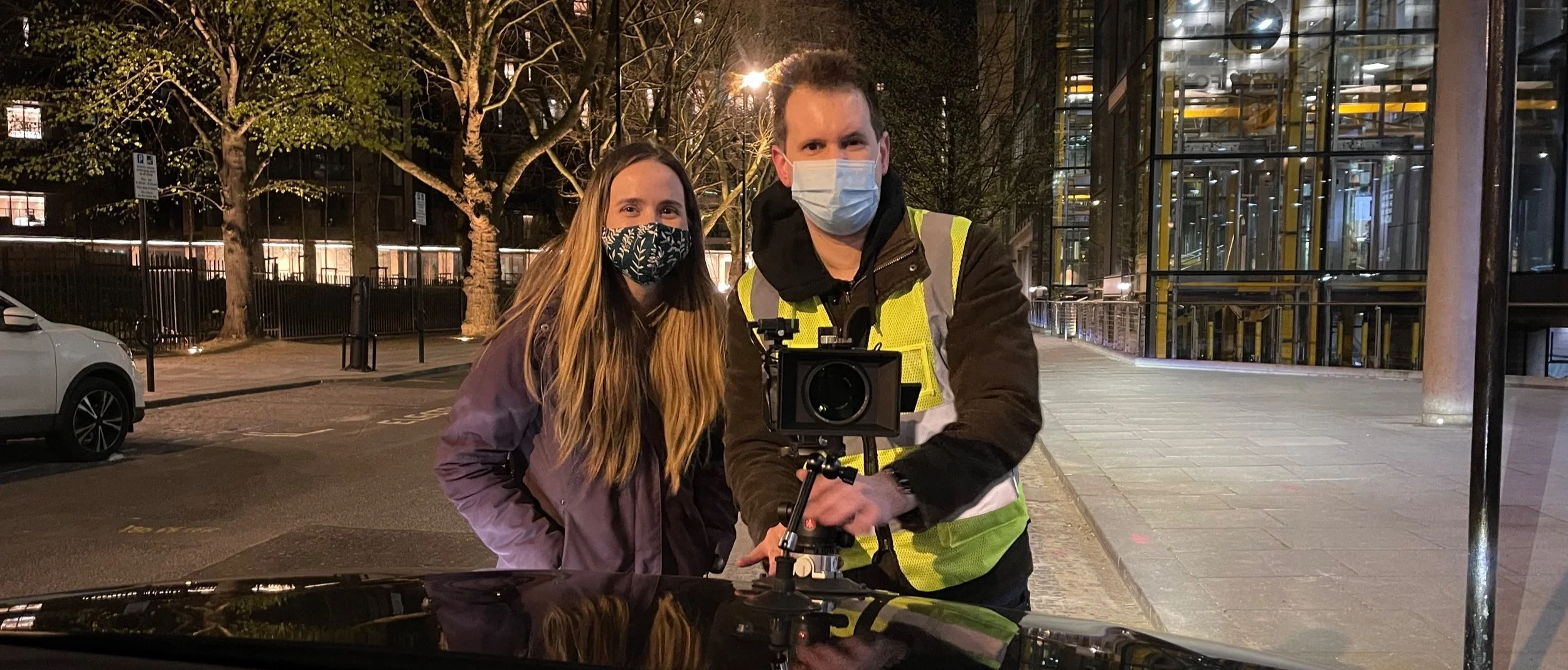
THE CREATIVE TEAM
We, Bertie and Samantha Speirs, are a writing and directing team. BLACK CAB is our debut feature film after a decade of working across the industry towards this goal. We are extremely proud of what we were able to achieve in the film with such limited time and money. While our next film will have a bit more of both of those resources, we know the lessons and skills we gained on BLACK CAB will be invaluable and help us continue to grow as filmmakers.
You can read a bit more about our careers here.
